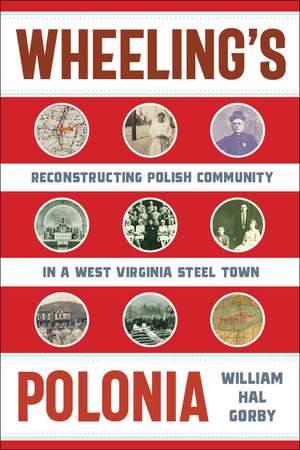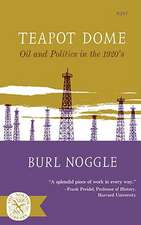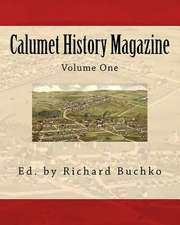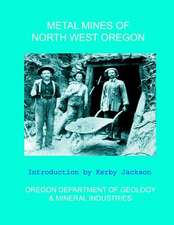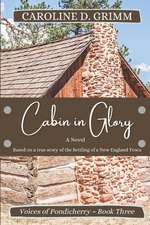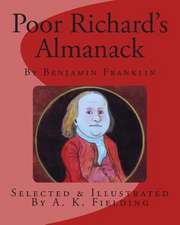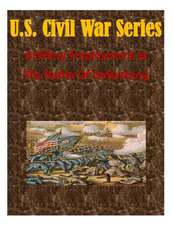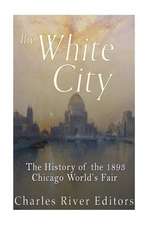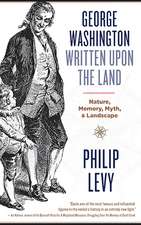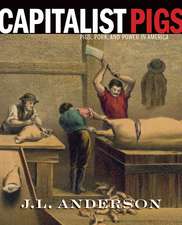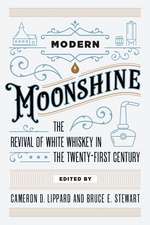Wheeling's Polonia: Reconstructing Polish Community in a West Virginia Steel Town: WEST VIRGINIA & APPALACHIA
Autor William Hal Gorbyen Limba Engleză Paperback – 25 mar 2020
Wheeling was a center of West Virginia’s labor movement, and Polish immigrants became a crucial element within the city’s active working-class culture. Arriving at what was also the center of the state’s Roman Catholic Diocese, Poles built religious and fraternal institutions to support new arrivals and to seek solace in times of economic strain and family hardship. The city’s history of crime and organized vice also affected new immigrants, who often lived in neighborhoods targeted for selective enforcement of Prohibition.
At once a deeply textured evocation of the city’s ethnic institutions and an engagement with larger questions about belonging, change, and justice, Wheeling’s Polonia is an inspiring account of a diverse working-class culture and the immigrants who built it.
| Toate formatele și edițiile | Preț | Express |
|---|---|---|
| Paperback (1) | 212.82 lei 6-8 săpt. | |
| West Virginia University Press – 25 mar 2020 | 212.82 lei 6-8 săpt. | |
| Hardback (1) | 592.61 lei 6-8 săpt. | |
| West Virginia University Press – mai 2020 | 592.61 lei 6-8 săpt. |
Din seria WEST VIRGINIA & APPALACHIA
-
 Preț: 158.10 lei
Preț: 158.10 lei -
 Preț: 210.64 lei
Preț: 210.64 lei -
 Preț: 240.00 lei
Preț: 240.00 lei -
 Preț: 181.23 lei
Preț: 181.23 lei -
 Preț: 141.70 lei
Preț: 141.70 lei -
 Preț: 164.10 lei
Preț: 164.10 lei -
 Preț: 168.42 lei
Preț: 168.42 lei -
 Preț: 147.17 lei
Preț: 147.17 lei -
 Preț: 150.26 lei
Preț: 150.26 lei - 11%
 Preț: 392.20 lei
Preț: 392.20 lei -
 Preț: 148.11 lei
Preț: 148.11 lei -
 Preț: 170.92 lei
Preț: 170.92 lei -
 Preț: 148.90 lei
Preț: 148.90 lei -
 Preț: 149.12 lei
Preț: 149.12 lei -
 Preț: 148.98 lei
Preț: 148.98 lei -
 Preț: 147.48 lei
Preț: 147.48 lei -
 Preț: 158.40 lei
Preț: 158.40 lei - 11%
 Preț: 435.10 lei
Preț: 435.10 lei -
 Preț: 143.99 lei
Preț: 143.99 lei -
 Preț: 154.41 lei
Preț: 154.41 lei -
 Preț: 196.29 lei
Preț: 196.29 lei -
 Preț: 196.29 lei
Preț: 196.29 lei
Preț: 212.82 lei
Nou
Puncte Express: 319
Preț estimativ în valută:
40.72€ • 42.67$ • 33.66£
40.72€ • 42.67$ • 33.66£
Carte tipărită la comandă
Livrare economică 11-25 aprilie
Preluare comenzi: 021 569.72.76
Specificații
ISBN-13: 9781949199406
ISBN-10: 1949199401
Pagini: 312
Ilustrații: 12 B&W images, 2 maps
Dimensiuni: 152 x 229 x 28 mm
Greutate: 0.43 kg
Ediția:1st Edition
Editura: West Virginia University Press
Colecția West Virginia University Press
Seria WEST VIRGINIA & APPALACHIA
ISBN-10: 1949199401
Pagini: 312
Ilustrații: 12 B&W images, 2 maps
Dimensiuni: 152 x 229 x 28 mm
Greutate: 0.43 kg
Ediția:1st Edition
Editura: West Virginia University Press
Colecția West Virginia University Press
Seria WEST VIRGINIA & APPALACHIA
Recenzii
“Wheeling’s Polonia is an important work. Gorby skillfully makes the case for why this story is significant, not just for labor and working-class history but also (by implication) for today’s electoral map. He shows a sensitivity to these workers and to the various facets of their identity as they evolved over time that many scholars and pundits often lack.”
—Donna T. Haverty-Stacke, author of America’s Forgotten Holiday: May Day and Nationalism, 1867–1960
—Donna T. Haverty-Stacke, author of America’s Forgotten Holiday: May Day and Nationalism, 1867–1960
Notă biografică
William Hal Gorby is a teaching assistant professor of history and director of undergraduate advising at West Virginia University. He teaches courses on West Virginian, Appalachian, and American immigration history. He also consulted on the research and script editing for the Emmy-nominated PBS American Experience documentary The Mine Wars.
Extras
Introduction
Thaddeus Janeczko was born in the village of Grębów in the Russian Empire on December 12, 1880. In 1906, he married Maryanna Gonsior, the daughter of a wealthy family in Gościeradów. The following year, he emigrated through the port of Antwerp, arriving at Ellis Island on March 15, 1907. His wife and daughter Helen joined him two years later. By 1910, the family had relocated to Wheeling, West Virginia, where Janeczko found work at the Benwood tube works in the lap pipe finishing department. The family, which grew to include eleven children, lived at 2619 Locust Street near the heart of the Wheeling factory district. The house was modest with front and middle rooms, a long kitchen area, three upstairs bedrooms, and a dirt basement where the family stored coal to heat the furnace. By 1930 it was valued at four thousand dollars. Thaddeus, whom his grandson later recalled “always building or fixing something” about the house, instilled in his children a strong work ethic. Several of his daughters worked at the Warwick China Company as teenagers stamping decals on finished ware. Another worked for the Wheeling Tile Company while his son Edward worked at Wheeling Machine Products. The family did their grocery shopping almost daily at Visnic’s Grocery Store, owned by a Serbian family, on Twenty-Sixth and Market Streets. For the Janeczko’s children and grandchildren, the streets nearby served as a place of pickup games and general socializing for years among a mixed community of Germans, Italians, Greeks, Serbians, Lebanese, and African Americans.[i]
The Janeczko family lived closer to St. Alphonsus Catholic Church but attended Catholic mass at St. Ladislaus at Forty-Fifth and Eoff Streets. Ethnic celebrations and religious sacraments were significant events. In 1922, Edward and Stella Janeczko were part of the confirmation class, while sister Martha was in one of the largest confirmation classes in May 1928 of 249 Polish American children.[ii] Marriages were also grand events in the life of St. Ladislaus. Helen Janeczko married Matthew Borgacz on August 27, 1927, and her sister Martha married Henry Baranowski on June 11, 1938.[iii]
The majority of Poles living in the multiethnic city of Wheeling, West Virginia, would have agreed with Wheeling novelist Keith Maillard’s fictional hero, who said of his South Wheeling childhood community, “We just called it Polish Town, but the old folks called it Stanisławówo, you know after the church, and they got that right because St. Stanislaus was pretty much the center of everything.”[iv] The description conjures up much of the ethnic solidarity that Polish South Wheeling experienced on a daily basis in the early twentieth century. Ed Gorczyka recalled how from Fortieth Street south to Benwood there were over fifty small businesses that catered to the specific needs of the ethnic Poles of the area.[v] At the same time, they shared urban space with a multiethnic working class. Here they saw the birth of the state’s Socialist movement and, in the 1930s, the Congress of Industrial Organization’s industrial union drive.
Following the late eighteenth century, settlers and early industrialists looked to Wheeling as a transportation hub on the Ohio River for commerce moving west as well as a source of early innovations in iron, glass, tobacco, and brewing production. Transportation improvements funded by the federal government and outside capital led to the building of the National Road, the Wheeling Suspension Bridge, and the Baltimore & Ohio Railroad. By the time of the Civil War, Wheeling was already a thriving industrial hub with the most diverse immigrant population in Virginia. Once the war was over, the region’s industries continued to expand along the Ohio River and east along the National Road, but topography placed limits on that growth. From 1850 to 1880, Wheeling’s population rose from 11,435 to 30,737 as the city became the center of cut nail production and the capital of West Virginia. After 1885, the city lost the state capital, and the cut nail industry fell into decline; however, the city’s investment capital and manufacturing infrastructure enabled businesses to diversify and adapt, making Wheeling and the surrounding region leaders in steel production. Beginning in the 1890s, the city attracted a wide array of southern and eastern European immigrants to labor in the factories, mines, and other industrial plants. This helped make Wheeling the center of the state’s Catholic population. In addition, its long industrial history made it the center of the state’s oldest central labor council.[vi]
These “new immigrants,” especially the Poles, left a world where it was becoming difficult to persist on the land. Poles began looking across the continent for higher wages. Making seasonal labor trips to the industrial core of western Germany and the factories around growing cities like Warsaw and Lublin, Polish peasants also embarked more permanently to the United States. While settling in many of the largest cities in the United States, a sizable number arrived in Wheeling. Here they lived in the heart of the city’s factory district and, after 1900, also the center of the vice district. Often neglected and despised by city leaders and the local labor movement, Poles were left to create their own life in Wheeling.
Arriving in Wheeling, Polish peasants had to form a self-sustaining ethnic community if they were going to endure. This was difficult since ethnic and regional differences divided them. By 1900, Wheeling’s Polish immigrants formed their community through the grassroots efforts of an active laity and their young, energetic priest Father Emil Musial. They built the parish of St. Ladislaus in the heart of South Wheeling. Through a mixture of religious piety and cultural nationalism, the community’s parish, social halls, and homes helped them to develop a distinct identity and promote a strong family economy while living amidst a diverse immigrant population.
The 1910s and the subsequent decades were critical for the community. The solace provided by the parish was a natural counterweight to the largely negative response working-class Poles received from the local labor movement. While received negatively at first, the Polish working class proved their solidarity by joining in a variety of labor strikes and organizing campaigns. World War I likewise served as another testing ground for the Poles’ loyalty to their new home country. Foreign-born Catholics saw the hyper-patriotic war climate as the best chance to prove their support for their adopted nation at war. Even though German Americans were targeted with suspicion, the Poles were able to thrive. They were widely praised by civic leaders for their support during Liberty bond campaigns, as well as for the large number who served in the American Expeditionary Force (AEF) and the Polish Army in France.
Once the war ended, Poles and other new immigrants were vital to the postwar labor strikes, especially those against the Wheeling Steel Corporation. However, solidarity would fall apart by the early 1920s, leading to much animosity and surveillance of the Polish quarter. In particular, these working-class immigrants would suffer from the selective enforcement of Prohibition. The postwar years also saw growing fears within the community about the relationship of the second generation to those who remained tied to the old Polonia. The 1920s witnessed a golden era of expansion of the institutional aspects of St. Ladislaus Catholic Parish. At the same time, younger Polish Americans increasingly interacted with those from other ethnic communities in the region, forging a distinctive Americanized culture. Through attending similar schools, playing on the same football and basketball teams, and working together in the mills and mines, these interethnic relations helped provide the background for the union organizing drives of the 1930s and 1940s.
Polish Immigration and the Medium-Sized City
To understand the total lived experiences of Wheeling’s industrial workers, Wheeling’s Polonia investigates the Polish immigrants who settled in Wheeling. While living in the industrial core of the city, Poles branched out and interacted with other immigrant neighborhoods throughout Wheeling. Poles and their immigrant neighbors did not compartmentalize their ethnic, religious, or class feelings. Core values of cooperation, equality, and mutual assistance were vital. Catholic historian Leslie Tentler has argued persuasively that “ethnic religiosity provided essential resources both for individual and family survival. . . . Religion provided them with perhaps their richest resources for shaping the world of everyday living.”[vii] Still the question remained: which way would these working-class ethnic communities go? Would they follow their ethnic Catholic traditions promoted by parish leaders, react to the class animosities promoted by the labor movement, or reach out to the corporate, Americanized culture? In many respects, they chose a little from all three, often balancing a left-leaning view of a moral economic order with a love of their Polish heritage and Catholic religion but all the while enticed by the mass consumer culture in the United States.
Wheeling challenges our traditional understanding of immigration during the height of industrialization. Studies of metropolitan areas are common, but I argue it is imperative to view immigration from the perspective of medium-sized industrial centers like Wheeling. The city had multiple ethnic groups, large-scale mass production (steel), and several medium-sized forms of production (tobacco, canning, tile, meatpacking, tobacco, glass, and brewing)—all of the variables available in a large city but on a manageable scale. Larger studies often focus on a snapshot image and samples from ethnic neighborhoods. Wheeling’s Polonia alters the focus, exploring the community from a more intimate level of analysis.
Turning our attention to smaller urban locales dramatically alters our understanding of the lived experiences of working-class immigrants. Late nineteenth- and early twentieth-century Detroit, Chicago, Pittsburgh, and New York provide fascinating case studies of working-class life, but Wheeling offers some differing perspectives. Overemphasizing larger metropolitan centers downplays factors distinct to each place, such as “the cultural values of particular groups living in a city, the economic character of specific communities, or the distinctive political cultures of localities.”[viii] Most Americans also did not live in cities over several hundred thousand people. This study contributes to a growing urban history stressing the peculiarities of place and cities of varying sizes. Only by taking city geography seriously can historians understand how local factors assisted or constrained class formation. By 1900, working-class communities were very diverse. In West Virginia they included small, isolated coal and timber camps in the rural counties and smaller manufacturing cities like Wheeling.[ix] Smaller cities still need more investigation. There, one can get a more intimate assessment of the lived experience of working-class people while not relying on abstract samples of a couple blocks of metropolitan immigrant neighborhoods. In smaller cities like Wheeling, the daily life of walking to work past a set of row houses, around the corner saloon, and past the Catholic parish, ducking to avoid a passing streetcar, and arriving to labor in a dangerous steel mill can be more richly described. Thus, smaller cities lend themselves to a deeper level of analysis of how urban space impacts class, ethnic, and religious identity formation.
Wheeling’s history made it a unique urban setting, thus contributing to its distinctive social stratification and working-class culture. Industrialization throughout the U.S. never occurred quite the same way based on geographic differences, access to raw materials and transportation networks, and the racial and ethnic makeup of the potential workforce. The Northern Panhandle and Upper Ohio River Valley is just such a place, where there were various experiences of industrialization. Louis Martin examined the creation of this rural-industrial working-class culture during the twentieth century among the steel and pottery workers at the top of the Northern Panhandle in Hancock County’s small factory towns of Chester, Newell, and Weirton. Native-born, European, and African American migrants developed a culture stressing local control over unions and government, a fear of distant bureaucracies, a strong attachment to place, and a culture of “making-do” to provide self-help activities (such as canning, gardens, and hunting). Since Hancock County lacked industry prior to 1900, its late entry into industrial work set workers on a different post-World War II path, as compared to union members in large metropolitan areas, in their view of the Democratic New Deal coalition and the CIO unionism.[x]
<Insert Figure I.1 about here>
Wheeling was also part of a wider regional story. According to Allen Dieterich-Ward’s Beyond Rust, Pittsburgh served as a hub for a metropolitan Steel Valley, connecting different industrial firms via a massive web of railroad track. However, a variety of municipal and state boundaries fractured the Steel Valley’s integrated economy between smaller regional centers (Steubenville, Ohio), mill towns (Homestead, Pennsylvania), and rural mining regions (Eastern Ohio). Industrial cities grew using urban capital to exploit rural peripheral areas, even while labor power was centralized in the urban core.[xi] Likewise, Wheeling was a smaller central hub for the Upper Ohio River Valley and crucial to the area’s diffuse industrial development. With mills spread out throughout Wheeling—but also across the river in Martins Ferry, Mingo Junction, and Yorkville, Ohio—along with coal mines to the north and east of the central city, Wheeling’s local economy had a wide reach. Polish immigrants had to negotiate not only with other immigrant groups in the city but also with the various mills and smaller communities on both sides of the Ohio River Valley.
Locality can influence the development of new ethnic identities and class formation among immigrant communities. This story was true of the Upper Ohio Valley’s industrial development, where starting in the 1880s and 1890s multi-plant steel mills and coal mines needed to act as a capital hub for future business growth while encouraging new forms of cheaper labor, like Polish immigrants, to relocate to the area. Wheeling thus served as a unique borderland to an extent, a highly urbanized and industrial zone surrounded by a large rural countryside. At the same time, the city was also within the larger industrial orbit of Pittsburgh, from which it could draw capital investment and a ready supply of labor power if needed.[xii]
Polish immigrants arrived in Wheeling with prior experience migrating from rural eastern European farms to find work in the mines and manufacturing centers of Germany and the Austro-Hungarian Empire. Studying a smaller Polish community like Wheeling highlights the regional and often village connections that linked immigrants back to Europe. Whatever their host society, Polish immigrants were already quite active in the public sphere, engaging in political, religious, and labor organizations. Once they arrived in Wheeling, Poles retained strong bonds to their villages and, through the influence of St. Ladislaus Parish and the rest of the ethnic community, developed a strong attachment to being “Polish” and later American.[xiii]
Looking at Wheeling’s Polonia highlights how Polish community-building in the United States was quite diverse. Many Poles settled in rural areas or cities of one hundred thousand people or fewer, locales similar in size and culture to the places rural Polish migrants left in eastern Europe.[xiv] Wheeling’s Polish community helps break what has become a “Chicago-centric” focus in understanding Polonia. Larger Polish enclaves witnessed intense rivalries between the Polish Roman Catholic Union (PRCU) and the Polish National Alliance (PNA) in defining Polish identity. However, Wheeling’s Poles held membership in various fraternal lodges, and these groups shared members, leaders, and worked together to promote Polish cultural events.[xv]
Polish immigrant enclaves led similar community building efforts, but local conditions and the size of the city dictated differing responses to social tensions. Take Wheeling and Toledo, Ohio, as examples. In both, Polish Catholic parishes were vibrant, and wedding ceremonies, religious processions, and Catholic social events were crucial parts of everyday life. Poles in Toledo likewise were clustered in several working-class neighborhoods, working mainly in the automobile plants. However, Poles there benefitted from institutions not present in Wheeling. Toledo had the Ameryka-Echo newspaper, “the self-appointed voice of Toledo’s Polonia,” whereas Wheeling’s Polonia was too small to support a regular newspaper. Editor Antoni Paryski’s support for the Republican Party and criticism of labor strikes fostered tension within the majority working-class Polish community. Even so, Toledo’s Polonia remained supportive of labor unions and tied to local Catholic parishes.[xvi]
Local community structures were crucial to class formation among immigrants to Appalachia as well. As glass companies relocated out of Pennsylvania and Ohio in the 1890s, new glassworker communities developed in Moundsville, Fairmont, and Clarksburg, West Virginia. Skilled immigrants exerted a class consciousness that depended on the strength and staying power of craft unions against labor-saving technologies.[xvii] As studied by Deborah Weiner, small towns were key sites as well for the eastern European Jews, who filtered into the coalfields of central Appalachia from their base in Baltimore. There, Jews acted as peddlers to the various coal camps while setting up communities in county seat towns like Williamson, Beckley, and Welch.[xviii] Thus, Wheeling serves as an excellent case study to examine the various connections between immigrant culture, the labor movement, and the importance of place in a modest-sized urban hub of manufacturing industries surrounded by a rural-industrial countryside.
[i] I would like to thank Sean Duffy for his excellent work conducting oral interviews with a variety of people of different ethnic backgrounds in Wheeling. For the Janeczkos, see Sean Duffy, The Wheeling Family, vol. 2, More Immigrants, Migrants, and Neighborhoods (Wheeling, WV: James Thornton, 2012), 207–17; Mike Janetsky, 1930 Manuscript Census, Wheeling Sixth Ward, Ohio County, WV, Enumeration District 16, Roll 2550, Page 11A, RG 29—Records of the Bureau of the Census, Fifteenth Census of the United States, National Archives and Records Administration (NARA), Washington, DC, reprinted via Ancestry.com.
[ii] St. Ladislaus Church Confirmation Book, 1922, 1928, St. Ladislaus Parish Sacramental Records, Archives of the Diocese of Wheeling-Charleston (hereafter DWC); Duffy, The Wheeling Family, vol. 2, 208.
[iii] Matthew Borgacz and Helen Janeczko Marriage Certificate, August 16, 1927; Henry S. Baranowski and Martha A. Janeczko, Marriage License, May 19, 1938, both from Ohio County, WV, West Virginia State Division of Vital Statistics, West Virginia State Archives and History Center, Charleston, WV (hereafter WVSA).
[iv] Keith Maillard, The Clarinet Polka (New York: St. Martin’s Press, 2003), 2.
[v] Ed Gorczyca, interview by the author, August 6, 2008.
[vi] David Javersak, “Ohio Valley Trades and Labor Assembly, 1882–1915” (PhD diss., West Virginia University, 1977); George Fetherling, Wheeling: A Brief History (Wheeling, WV: Polyhedron Learning Media, 2008).
[vii] Leslie Woodcock Tentler, “Present at the Creation: Working-Class Catholics in the United States,” in American Exceptionalism?: U.S. Working-Class Formation in an International Context, eds. Rick Halperin and Jonathan Morris (New York: Palgrave Macmillan, 1997), 135; these values were crucial to the “subculture of opposition” defined in Richard Jules Oestreicher, Solidarity and Fragmentation: Working People and Class Consciousness in Detroit, 1875–1900, 2nd ed. (Urbana: University of Illinois Press, 1989), 60–67.
[viii] James Connolly, “Bringing the City Back In: Space and Place in the Urban History of the Gilded Age and Progressive Era,” Journal of the Gilded Age and Progressive Era 1, no. 3 (July 2002): 262, 270–71.
[ix] Ronald L. Lewis, Transforming the Appalachian Countryside: Railroads, Deforestation, and Social Change in West Virginia, 1840–1940 (Chapel Hill: University of North Carolina Press, 1998); Ken Fones-Wolf, Glass Towns: Industry, Labor, and Political Economy in Appalachia, 1890–1930s (Urbana: University of Illinois Press, 2007).
[x] Lou Martin, Smokestacks in the Hills: Rural-Industrial Workers in West Virginia (Urbana: University of Illinois Press, 2015), 1–2, 6–11.
[xi] Allen Dieterich-Ward, Beyond Rust: Metropolitan Pittsburgh and the Fate of Industrial America (Philadelphia: University of Pennsylvania Press, 2015), 2–3, 6–8, 13–14.
[xii] On Wheeling as an industrial hub within the larger Pittsburgh region, see Dieterich-Ward, Beyond Rust. Historians of the U.S.-Mexico borderlands have also noted this trend, especially for fostering a multiracial working class, that navigated the unique localities along the border, like El Paso, Texas, and Cochise County, Arizona. See for example Monica Perales, Smeltertown: Making and Remembering a Southwest Border Community (Chapel Hill: University of North Carolina Press, 2010), 3, 60; Katherine Benton-Cohen, Borderland Americans: Racial Division and Labor War in the Arizona Borderlands (Cambridge, MA: Harvard University Press, 2009).
[xiii] Brian McCook, The Border of Integration: Polish Migrants in Germany and the United States (Athens: Ohio University Press, 2011).
[xiv] This study of Wheeling joins with scholars analyzing rural Polish immigrant communities, particularly in the Midwest. John Radziłowski has examined about fifty rural towns that attracted Polish migrants in rural Minnesota and the eastern Dakotas. Most were from the German partition, arriving as family chain migrations from similar villages, not unlike what took place in Wheeling. Likewise, they settled in a heavily German part of the Midwest, creating a familiar rural and ethnic diversity to what they left in Europe. See Radziłowski, “Out on the Wind: Life in Minnesota’s Polish Farming Communities,” Minnesota History 58, no. 1 (Spring 2002): 18–20, quote p. 21; Radziłowski, Poles in Minnesota (St. Paul: Minnesota Historical Society Press, 2005); Susan Gibson Mikoś, Poles in Wisconsin (Madison: Wisconsin Historical Society Press, 2012).
[xv] William J. Galush found a similar trend in the Polish communities in Minnesota, Cleveland, Ohio, Utica, and New York Mills, New York. See Galush, For More than Bread: Community and Identity in American Polonia, 1880–1940 (Boulder, CO: East European Monographs, 2006).
[xvi] Timothy G. Borden, “The Salvation of the Poles: Working Class Ethnicity and Americanization Efforts during the Interwar Period in Toledo, Ohio,” Polish American Studies 56, no. 2 (Autumn 1999): 20–21, 24, 26.
[xvii] Fones-Wolf, Glass Towns.
[xviii] Deborah R. Weiner, Coalfield Jews: An Appalachian History (Urbana: University of Illinois Press, 2006).
Thaddeus Janeczko was born in the village of Grębów in the Russian Empire on December 12, 1880. In 1906, he married Maryanna Gonsior, the daughter of a wealthy family in Gościeradów. The following year, he emigrated through the port of Antwerp, arriving at Ellis Island on March 15, 1907. His wife and daughter Helen joined him two years later. By 1910, the family had relocated to Wheeling, West Virginia, where Janeczko found work at the Benwood tube works in the lap pipe finishing department. The family, which grew to include eleven children, lived at 2619 Locust Street near the heart of the Wheeling factory district. The house was modest with front and middle rooms, a long kitchen area, three upstairs bedrooms, and a dirt basement where the family stored coal to heat the furnace. By 1930 it was valued at four thousand dollars. Thaddeus, whom his grandson later recalled “always building or fixing something” about the house, instilled in his children a strong work ethic. Several of his daughters worked at the Warwick China Company as teenagers stamping decals on finished ware. Another worked for the Wheeling Tile Company while his son Edward worked at Wheeling Machine Products. The family did their grocery shopping almost daily at Visnic’s Grocery Store, owned by a Serbian family, on Twenty-Sixth and Market Streets. For the Janeczko’s children and grandchildren, the streets nearby served as a place of pickup games and general socializing for years among a mixed community of Germans, Italians, Greeks, Serbians, Lebanese, and African Americans.[i]
The Janeczko family lived closer to St. Alphonsus Catholic Church but attended Catholic mass at St. Ladislaus at Forty-Fifth and Eoff Streets. Ethnic celebrations and religious sacraments were significant events. In 1922, Edward and Stella Janeczko were part of the confirmation class, while sister Martha was in one of the largest confirmation classes in May 1928 of 249 Polish American children.[ii] Marriages were also grand events in the life of St. Ladislaus. Helen Janeczko married Matthew Borgacz on August 27, 1927, and her sister Martha married Henry Baranowski on June 11, 1938.[iii]
The majority of Poles living in the multiethnic city of Wheeling, West Virginia, would have agreed with Wheeling novelist Keith Maillard’s fictional hero, who said of his South Wheeling childhood community, “We just called it Polish Town, but the old folks called it Stanisławówo, you know after the church, and they got that right because St. Stanislaus was pretty much the center of everything.”[iv] The description conjures up much of the ethnic solidarity that Polish South Wheeling experienced on a daily basis in the early twentieth century. Ed Gorczyka recalled how from Fortieth Street south to Benwood there were over fifty small businesses that catered to the specific needs of the ethnic Poles of the area.[v] At the same time, they shared urban space with a multiethnic working class. Here they saw the birth of the state’s Socialist movement and, in the 1930s, the Congress of Industrial Organization’s industrial union drive.
Following the late eighteenth century, settlers and early industrialists looked to Wheeling as a transportation hub on the Ohio River for commerce moving west as well as a source of early innovations in iron, glass, tobacco, and brewing production. Transportation improvements funded by the federal government and outside capital led to the building of the National Road, the Wheeling Suspension Bridge, and the Baltimore & Ohio Railroad. By the time of the Civil War, Wheeling was already a thriving industrial hub with the most diverse immigrant population in Virginia. Once the war was over, the region’s industries continued to expand along the Ohio River and east along the National Road, but topography placed limits on that growth. From 1850 to 1880, Wheeling’s population rose from 11,435 to 30,737 as the city became the center of cut nail production and the capital of West Virginia. After 1885, the city lost the state capital, and the cut nail industry fell into decline; however, the city’s investment capital and manufacturing infrastructure enabled businesses to diversify and adapt, making Wheeling and the surrounding region leaders in steel production. Beginning in the 1890s, the city attracted a wide array of southern and eastern European immigrants to labor in the factories, mines, and other industrial plants. This helped make Wheeling the center of the state’s Catholic population. In addition, its long industrial history made it the center of the state’s oldest central labor council.[vi]
These “new immigrants,” especially the Poles, left a world where it was becoming difficult to persist on the land. Poles began looking across the continent for higher wages. Making seasonal labor trips to the industrial core of western Germany and the factories around growing cities like Warsaw and Lublin, Polish peasants also embarked more permanently to the United States. While settling in many of the largest cities in the United States, a sizable number arrived in Wheeling. Here they lived in the heart of the city’s factory district and, after 1900, also the center of the vice district. Often neglected and despised by city leaders and the local labor movement, Poles were left to create their own life in Wheeling.
Arriving in Wheeling, Polish peasants had to form a self-sustaining ethnic community if they were going to endure. This was difficult since ethnic and regional differences divided them. By 1900, Wheeling’s Polish immigrants formed their community through the grassroots efforts of an active laity and their young, energetic priest Father Emil Musial. They built the parish of St. Ladislaus in the heart of South Wheeling. Through a mixture of religious piety and cultural nationalism, the community’s parish, social halls, and homes helped them to develop a distinct identity and promote a strong family economy while living amidst a diverse immigrant population.
The 1910s and the subsequent decades were critical for the community. The solace provided by the parish was a natural counterweight to the largely negative response working-class Poles received from the local labor movement. While received negatively at first, the Polish working class proved their solidarity by joining in a variety of labor strikes and organizing campaigns. World War I likewise served as another testing ground for the Poles’ loyalty to their new home country. Foreign-born Catholics saw the hyper-patriotic war climate as the best chance to prove their support for their adopted nation at war. Even though German Americans were targeted with suspicion, the Poles were able to thrive. They were widely praised by civic leaders for their support during Liberty bond campaigns, as well as for the large number who served in the American Expeditionary Force (AEF) and the Polish Army in France.
Once the war ended, Poles and other new immigrants were vital to the postwar labor strikes, especially those against the Wheeling Steel Corporation. However, solidarity would fall apart by the early 1920s, leading to much animosity and surveillance of the Polish quarter. In particular, these working-class immigrants would suffer from the selective enforcement of Prohibition. The postwar years also saw growing fears within the community about the relationship of the second generation to those who remained tied to the old Polonia. The 1920s witnessed a golden era of expansion of the institutional aspects of St. Ladislaus Catholic Parish. At the same time, younger Polish Americans increasingly interacted with those from other ethnic communities in the region, forging a distinctive Americanized culture. Through attending similar schools, playing on the same football and basketball teams, and working together in the mills and mines, these interethnic relations helped provide the background for the union organizing drives of the 1930s and 1940s.
Polish Immigration and the Medium-Sized City
To understand the total lived experiences of Wheeling’s industrial workers, Wheeling’s Polonia investigates the Polish immigrants who settled in Wheeling. While living in the industrial core of the city, Poles branched out and interacted with other immigrant neighborhoods throughout Wheeling. Poles and their immigrant neighbors did not compartmentalize their ethnic, religious, or class feelings. Core values of cooperation, equality, and mutual assistance were vital. Catholic historian Leslie Tentler has argued persuasively that “ethnic religiosity provided essential resources both for individual and family survival. . . . Religion provided them with perhaps their richest resources for shaping the world of everyday living.”[vii] Still the question remained: which way would these working-class ethnic communities go? Would they follow their ethnic Catholic traditions promoted by parish leaders, react to the class animosities promoted by the labor movement, or reach out to the corporate, Americanized culture? In many respects, they chose a little from all three, often balancing a left-leaning view of a moral economic order with a love of their Polish heritage and Catholic religion but all the while enticed by the mass consumer culture in the United States.
Wheeling challenges our traditional understanding of immigration during the height of industrialization. Studies of metropolitan areas are common, but I argue it is imperative to view immigration from the perspective of medium-sized industrial centers like Wheeling. The city had multiple ethnic groups, large-scale mass production (steel), and several medium-sized forms of production (tobacco, canning, tile, meatpacking, tobacco, glass, and brewing)—all of the variables available in a large city but on a manageable scale. Larger studies often focus on a snapshot image and samples from ethnic neighborhoods. Wheeling’s Polonia alters the focus, exploring the community from a more intimate level of analysis.
Turning our attention to smaller urban locales dramatically alters our understanding of the lived experiences of working-class immigrants. Late nineteenth- and early twentieth-century Detroit, Chicago, Pittsburgh, and New York provide fascinating case studies of working-class life, but Wheeling offers some differing perspectives. Overemphasizing larger metropolitan centers downplays factors distinct to each place, such as “the cultural values of particular groups living in a city, the economic character of specific communities, or the distinctive political cultures of localities.”[viii] Most Americans also did not live in cities over several hundred thousand people. This study contributes to a growing urban history stressing the peculiarities of place and cities of varying sizes. Only by taking city geography seriously can historians understand how local factors assisted or constrained class formation. By 1900, working-class communities were very diverse. In West Virginia they included small, isolated coal and timber camps in the rural counties and smaller manufacturing cities like Wheeling.[ix] Smaller cities still need more investigation. There, one can get a more intimate assessment of the lived experience of working-class people while not relying on abstract samples of a couple blocks of metropolitan immigrant neighborhoods. In smaller cities like Wheeling, the daily life of walking to work past a set of row houses, around the corner saloon, and past the Catholic parish, ducking to avoid a passing streetcar, and arriving to labor in a dangerous steel mill can be more richly described. Thus, smaller cities lend themselves to a deeper level of analysis of how urban space impacts class, ethnic, and religious identity formation.
Wheeling’s history made it a unique urban setting, thus contributing to its distinctive social stratification and working-class culture. Industrialization throughout the U.S. never occurred quite the same way based on geographic differences, access to raw materials and transportation networks, and the racial and ethnic makeup of the potential workforce. The Northern Panhandle and Upper Ohio River Valley is just such a place, where there were various experiences of industrialization. Louis Martin examined the creation of this rural-industrial working-class culture during the twentieth century among the steel and pottery workers at the top of the Northern Panhandle in Hancock County’s small factory towns of Chester, Newell, and Weirton. Native-born, European, and African American migrants developed a culture stressing local control over unions and government, a fear of distant bureaucracies, a strong attachment to place, and a culture of “making-do” to provide self-help activities (such as canning, gardens, and hunting). Since Hancock County lacked industry prior to 1900, its late entry into industrial work set workers on a different post-World War II path, as compared to union members in large metropolitan areas, in their view of the Democratic New Deal coalition and the CIO unionism.[x]
<Insert Figure I.1 about here>
Wheeling was also part of a wider regional story. According to Allen Dieterich-Ward’s Beyond Rust, Pittsburgh served as a hub for a metropolitan Steel Valley, connecting different industrial firms via a massive web of railroad track. However, a variety of municipal and state boundaries fractured the Steel Valley’s integrated economy between smaller regional centers (Steubenville, Ohio), mill towns (Homestead, Pennsylvania), and rural mining regions (Eastern Ohio). Industrial cities grew using urban capital to exploit rural peripheral areas, even while labor power was centralized in the urban core.[xi] Likewise, Wheeling was a smaller central hub for the Upper Ohio River Valley and crucial to the area’s diffuse industrial development. With mills spread out throughout Wheeling—but also across the river in Martins Ferry, Mingo Junction, and Yorkville, Ohio—along with coal mines to the north and east of the central city, Wheeling’s local economy had a wide reach. Polish immigrants had to negotiate not only with other immigrant groups in the city but also with the various mills and smaller communities on both sides of the Ohio River Valley.
Locality can influence the development of new ethnic identities and class formation among immigrant communities. This story was true of the Upper Ohio Valley’s industrial development, where starting in the 1880s and 1890s multi-plant steel mills and coal mines needed to act as a capital hub for future business growth while encouraging new forms of cheaper labor, like Polish immigrants, to relocate to the area. Wheeling thus served as a unique borderland to an extent, a highly urbanized and industrial zone surrounded by a large rural countryside. At the same time, the city was also within the larger industrial orbit of Pittsburgh, from which it could draw capital investment and a ready supply of labor power if needed.[xii]
Polish immigrants arrived in Wheeling with prior experience migrating from rural eastern European farms to find work in the mines and manufacturing centers of Germany and the Austro-Hungarian Empire. Studying a smaller Polish community like Wheeling highlights the regional and often village connections that linked immigrants back to Europe. Whatever their host society, Polish immigrants were already quite active in the public sphere, engaging in political, religious, and labor organizations. Once they arrived in Wheeling, Poles retained strong bonds to their villages and, through the influence of St. Ladislaus Parish and the rest of the ethnic community, developed a strong attachment to being “Polish” and later American.[xiii]
Looking at Wheeling’s Polonia highlights how Polish community-building in the United States was quite diverse. Many Poles settled in rural areas or cities of one hundred thousand people or fewer, locales similar in size and culture to the places rural Polish migrants left in eastern Europe.[xiv] Wheeling’s Polish community helps break what has become a “Chicago-centric” focus in understanding Polonia. Larger Polish enclaves witnessed intense rivalries between the Polish Roman Catholic Union (PRCU) and the Polish National Alliance (PNA) in defining Polish identity. However, Wheeling’s Poles held membership in various fraternal lodges, and these groups shared members, leaders, and worked together to promote Polish cultural events.[xv]
Polish immigrant enclaves led similar community building efforts, but local conditions and the size of the city dictated differing responses to social tensions. Take Wheeling and Toledo, Ohio, as examples. In both, Polish Catholic parishes were vibrant, and wedding ceremonies, religious processions, and Catholic social events were crucial parts of everyday life. Poles in Toledo likewise were clustered in several working-class neighborhoods, working mainly in the automobile plants. However, Poles there benefitted from institutions not present in Wheeling. Toledo had the Ameryka-Echo newspaper, “the self-appointed voice of Toledo’s Polonia,” whereas Wheeling’s Polonia was too small to support a regular newspaper. Editor Antoni Paryski’s support for the Republican Party and criticism of labor strikes fostered tension within the majority working-class Polish community. Even so, Toledo’s Polonia remained supportive of labor unions and tied to local Catholic parishes.[xvi]
Local community structures were crucial to class formation among immigrants to Appalachia as well. As glass companies relocated out of Pennsylvania and Ohio in the 1890s, new glassworker communities developed in Moundsville, Fairmont, and Clarksburg, West Virginia. Skilled immigrants exerted a class consciousness that depended on the strength and staying power of craft unions against labor-saving technologies.[xvii] As studied by Deborah Weiner, small towns were key sites as well for the eastern European Jews, who filtered into the coalfields of central Appalachia from their base in Baltimore. There, Jews acted as peddlers to the various coal camps while setting up communities in county seat towns like Williamson, Beckley, and Welch.[xviii] Thus, Wheeling serves as an excellent case study to examine the various connections between immigrant culture, the labor movement, and the importance of place in a modest-sized urban hub of manufacturing industries surrounded by a rural-industrial countryside.
[i] I would like to thank Sean Duffy for his excellent work conducting oral interviews with a variety of people of different ethnic backgrounds in Wheeling. For the Janeczkos, see Sean Duffy, The Wheeling Family, vol. 2, More Immigrants, Migrants, and Neighborhoods (Wheeling, WV: James Thornton, 2012), 207–17; Mike Janetsky, 1930 Manuscript Census, Wheeling Sixth Ward, Ohio County, WV, Enumeration District 16, Roll 2550, Page 11A, RG 29—Records of the Bureau of the Census, Fifteenth Census of the United States, National Archives and Records Administration (NARA), Washington, DC, reprinted via Ancestry.com.
[ii] St. Ladislaus Church Confirmation Book, 1922, 1928, St. Ladislaus Parish Sacramental Records, Archives of the Diocese of Wheeling-Charleston (hereafter DWC); Duffy, The Wheeling Family, vol. 2, 208.
[iii] Matthew Borgacz and Helen Janeczko Marriage Certificate, August 16, 1927; Henry S. Baranowski and Martha A. Janeczko, Marriage License, May 19, 1938, both from Ohio County, WV, West Virginia State Division of Vital Statistics, West Virginia State Archives and History Center, Charleston, WV (hereafter WVSA).
[iv] Keith Maillard, The Clarinet Polka (New York: St. Martin’s Press, 2003), 2.
[v] Ed Gorczyca, interview by the author, August 6, 2008.
[vi] David Javersak, “Ohio Valley Trades and Labor Assembly, 1882–1915” (PhD diss., West Virginia University, 1977); George Fetherling, Wheeling: A Brief History (Wheeling, WV: Polyhedron Learning Media, 2008).
[vii] Leslie Woodcock Tentler, “Present at the Creation: Working-Class Catholics in the United States,” in American Exceptionalism?: U.S. Working-Class Formation in an International Context, eds. Rick Halperin and Jonathan Morris (New York: Palgrave Macmillan, 1997), 135; these values were crucial to the “subculture of opposition” defined in Richard Jules Oestreicher, Solidarity and Fragmentation: Working People and Class Consciousness in Detroit, 1875–1900, 2nd ed. (Urbana: University of Illinois Press, 1989), 60–67.
[viii] James Connolly, “Bringing the City Back In: Space and Place in the Urban History of the Gilded Age and Progressive Era,” Journal of the Gilded Age and Progressive Era 1, no. 3 (July 2002): 262, 270–71.
[ix] Ronald L. Lewis, Transforming the Appalachian Countryside: Railroads, Deforestation, and Social Change in West Virginia, 1840–1940 (Chapel Hill: University of North Carolina Press, 1998); Ken Fones-Wolf, Glass Towns: Industry, Labor, and Political Economy in Appalachia, 1890–1930s (Urbana: University of Illinois Press, 2007).
[x] Lou Martin, Smokestacks in the Hills: Rural-Industrial Workers in West Virginia (Urbana: University of Illinois Press, 2015), 1–2, 6–11.
[xi] Allen Dieterich-Ward, Beyond Rust: Metropolitan Pittsburgh and the Fate of Industrial America (Philadelphia: University of Pennsylvania Press, 2015), 2–3, 6–8, 13–14.
[xii] On Wheeling as an industrial hub within the larger Pittsburgh region, see Dieterich-Ward, Beyond Rust. Historians of the U.S.-Mexico borderlands have also noted this trend, especially for fostering a multiracial working class, that navigated the unique localities along the border, like El Paso, Texas, and Cochise County, Arizona. See for example Monica Perales, Smeltertown: Making and Remembering a Southwest Border Community (Chapel Hill: University of North Carolina Press, 2010), 3, 60; Katherine Benton-Cohen, Borderland Americans: Racial Division and Labor War in the Arizona Borderlands (Cambridge, MA: Harvard University Press, 2009).
[xiii] Brian McCook, The Border of Integration: Polish Migrants in Germany and the United States (Athens: Ohio University Press, 2011).
[xiv] This study of Wheeling joins with scholars analyzing rural Polish immigrant communities, particularly in the Midwest. John Radziłowski has examined about fifty rural towns that attracted Polish migrants in rural Minnesota and the eastern Dakotas. Most were from the German partition, arriving as family chain migrations from similar villages, not unlike what took place in Wheeling. Likewise, they settled in a heavily German part of the Midwest, creating a familiar rural and ethnic diversity to what they left in Europe. See Radziłowski, “Out on the Wind: Life in Minnesota’s Polish Farming Communities,” Minnesota History 58, no. 1 (Spring 2002): 18–20, quote p. 21; Radziłowski, Poles in Minnesota (St. Paul: Minnesota Historical Society Press, 2005); Susan Gibson Mikoś, Poles in Wisconsin (Madison: Wisconsin Historical Society Press, 2012).
[xv] William J. Galush found a similar trend in the Polish communities in Minnesota, Cleveland, Ohio, Utica, and New York Mills, New York. See Galush, For More than Bread: Community and Identity in American Polonia, 1880–1940 (Boulder, CO: East European Monographs, 2006).
[xvi] Timothy G. Borden, “The Salvation of the Poles: Working Class Ethnicity and Americanization Efforts during the Interwar Period in Toledo, Ohio,” Polish American Studies 56, no. 2 (Autumn 1999): 20–21, 24, 26.
[xvii] Fones-Wolf, Glass Towns.
[xviii] Deborah R. Weiner, Coalfield Jews: An Appalachian History (Urbana: University of Illinois Press, 2006).
Textul de pe ultima copertă
William Hal Gorby’s study of Wheeling’s Polish community weaves together stories of immigrating, working, and creating a distinctly Polish American community, or Polonia, in the heart of the upper Ohio Valley steel industry. It addresses major topics in the history of the United States in the first half of the twentieth century, while shifting from urban historians’ traditional focus on large cities to a case study in a smaller Appalachian setting.
Wheeling was a center of West Virginia’s labor movement, and Polish immigrants became a crucial element within the city’s active working-class culture. Arriving at what was also the center of the state’s Roman Catholic Diocese, Poles built religious and fraternal institutions to support new arrivals and to seek solace in times of economic strain and family hardship. The city’s history of crime and organized vice also affected new immigrants, who often lived in neighborhoods targeted for selective enforcement of Prohibition.
At once a deeply textured evocation of the city’s ethnic institutions and an engagement with larger questions about belonging, change, and justice, Wheeling’s Polonia is an inspiring account of a diverse working-class culture and the immigrants who built it.
Wheeling was a center of West Virginia’s labor movement, and Polish immigrants became a crucial element within the city’s active working-class culture. Arriving at what was also the center of the state’s Roman Catholic Diocese, Poles built religious and fraternal institutions to support new arrivals and to seek solace in times of economic strain and family hardship. The city’s history of crime and organized vice also affected new immigrants, who often lived in neighborhoods targeted for selective enforcement of Prohibition.
At once a deeply textured evocation of the city’s ethnic institutions and an engagement with larger questions about belonging, change, and justice, Wheeling’s Polonia is an inspiring account of a diverse working-class culture and the immigrants who built it.
Cuprins
Acknowledgments
Introduction
1. “Wheeling Might Appropriately Be Called a Polish City”: A Local Look at the Polish Migration, 1870–1915
2. “There Has Always Been a Tough Element in That Section”: Work, Culture, and Society in South Wheeling and Benwood
3. The Heart of the Community: Polish Catholics at St. Ladislaus Parish, 1890–1917
4. Finding a Good Job and a Good Union for Polonia: Polish Workers within Wheeling’s Labor Movement, 1890–1915
5. Proving Their Loyalty: Wheeling’s Polish Immigrants during World War I
6. Struggling for Economic Security: Polonia during the 1919 Steel Strike and the Roaring Twenties
7. Polonia Adapts to the “New Era” of the 1920s
8. Moonshiners and Bootleggers: New Immigrants and the Selective Enforcement of Prohibition in Wheeling
9. Polonia in the Great Depression and the Rise of the CIO at Wheeling Steel
Conclusion
Notes
Bibliography
Index
Introduction
1. “Wheeling Might Appropriately Be Called a Polish City”: A Local Look at the Polish Migration, 1870–1915
2. “There Has Always Been a Tough Element in That Section”: Work, Culture, and Society in South Wheeling and Benwood
3. The Heart of the Community: Polish Catholics at St. Ladislaus Parish, 1890–1917
4. Finding a Good Job and a Good Union for Polonia: Polish Workers within Wheeling’s Labor Movement, 1890–1915
5. Proving Their Loyalty: Wheeling’s Polish Immigrants during World War I
6. Struggling for Economic Security: Polonia during the 1919 Steel Strike and the Roaring Twenties
7. Polonia Adapts to the “New Era” of the 1920s
8. Moonshiners and Bootleggers: New Immigrants and the Selective Enforcement of Prohibition in Wheeling
9. Polonia in the Great Depression and the Rise of the CIO at Wheeling Steel
Conclusion
Notes
Bibliography
Index
